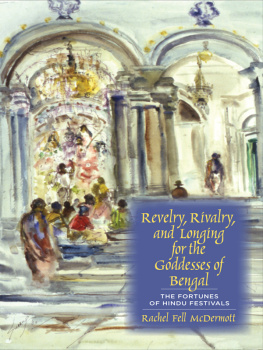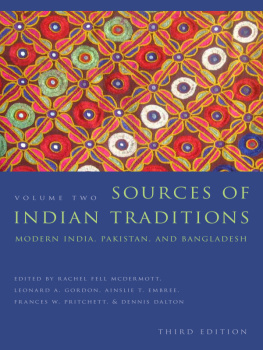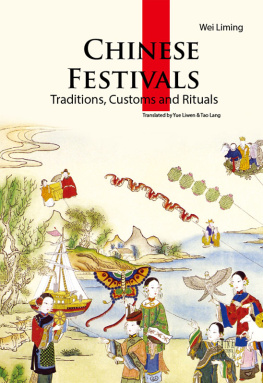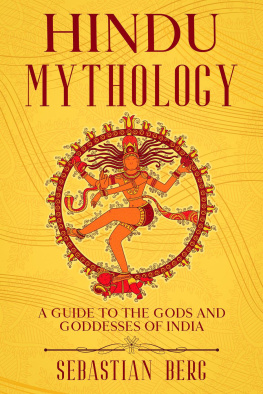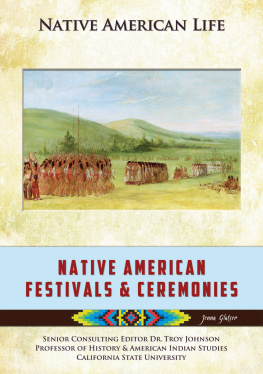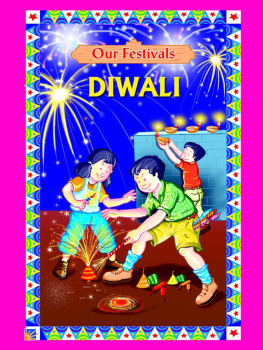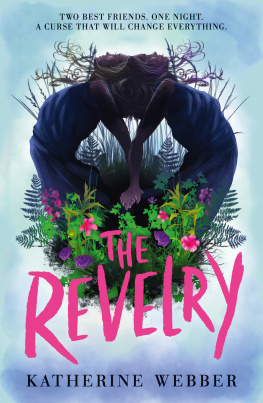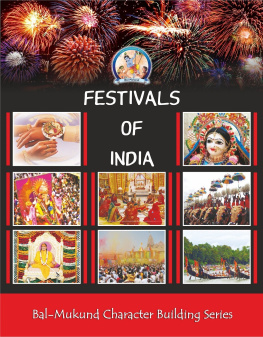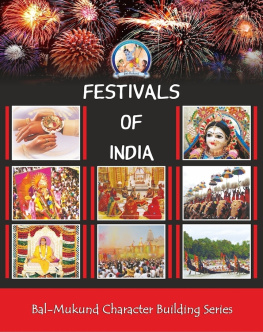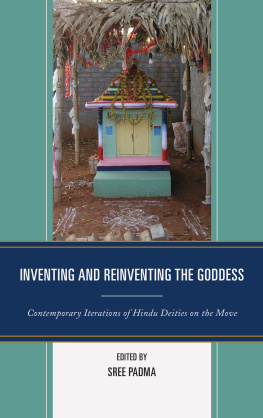REVELRY, RIVALRY, AND LONGING FOR THE GODDESSES OF BENGAL
Revelry, Rivalry, and Longing for the Goddesses of Bengal
The Fortunes of Hindu Festivals
Rachel Fell McDermott
COLUMBIA UNIVERSITY PRESS NEW YORK

Columbia University Press
Publishers Since 1893
New York Chichester, West Sussex
cup.columbia.edu
Copyright 2011 Rachel Fell McDermott
All rights reserved
E-ISBN 978-0-231-52787-3
Library of Congress Cataloging-in-Publication Data
McDermott, Rachel Fell.
Revelry, Rivalry, and Longing for the Goddesses of Bengal : the fortunes of Hindu festivals / Rachel Fell McDermott.
p. cm.
Includes bibliographical references and index.
ISBN 978-0-231-12918-3 (cloth : alk. paper) ISBN 978-0-231-12919-0 (pbk.)
ISBN 978-0-231-52787-3 (e-book)
1. Durga-puja (Hindu festival)IndiaWest Bengal. 2. Jagaddhatri-puja (Hindu festival)IndiaWest Bengal. 3. Kali-puja (Hindu festival)IndiaWest Bengal. 4. West Bengal (India)Religious life and customs. I. Title.
BL1239.82.D87M33 2011
294.536095414dc22
2010020693
A Columbia University Press E-book.
CUP would be pleased to hear about your reading experience with this e-book at .
References to Internet Web sites (URLs) were accurate at the time of writing. Neither the author nor Columbia University Press is responsible for URLs that may have expired or changed since the manuscript was prepared.
For
Keshab Chandra Sarkar
and Hena Basu
Contents
| Artisans working on images for the upcoming Durg Pj season. |
| Inside the hkurdln at the Shovabazar Rj house. |
| Bathing the kal bau. |
| Releasing the nlkaha pkh. |
| William Prinsep, Entertainment during the Durga Puja, 1840. |
| For the Poojahs. |
| Poojah Holidays. |
| Feeding the Goddess in the shape of a little girl at kumr pj. |
| Sindr-khel at a house in Howrah city. |
| gaman. |
| The traditional ekcla image. |
| Durg holds Ka in her lap. |
| Gopevar Pl. |
| A Gopevar Pl tableau from 1939. |
| Jagaddhtr. |
| A Durg Pj pandal shaped like Ajanta Caves. |
| A Durg Pj pandal in the shape of a Tata Motors factory. |
| A Durg Pj pandal in the shape of the Titanic. |
| Plane crashing into the World Trade Center. |
| Mahia in the shape of Osama bin Laden. |
| A Goan church being dismantled at the conclusion of Jagaddhtr Pj. |
| Two types of Kl. |
| The Kl of Klgh Temple. |
| Siddhevarkl at the Citpur Temple. |
| N. C. Pls new Kl of the 1930s. |
| A modern Kl, with iva nearly sitting up. |
| Goat heads placed before the image of Kl at a house Pj in Belpukur. 188 |
| Kl seated on iva. |
| A Jurassic Park dinosaur entertaining onlookers at Kl Pj. |
| The Kl too horrible to worship. |
| The Kl at Kaliganj. |
| Children protesting against animal sacrifice, Klgh Temple. |
| The Durg image at the Garden State Cultural Association. |
| The ritual of bara. |
| Processing tal in her palanquin from her temple to the bathing gh. |
| Women performing the arduous rite of da-k. |
My interest in the annual public festivals for the three Hindu goddesses Durg, Jagaddhtr, and Kl began in 1988, when I arrived in October for the commencement of two years of dissertation work on something else. I had come to study the devotional poetry tradition to Kl and Durg in her form as Um, and the festivals, or Pjs, were a fascinating sideshow, effectively and forcibly stopping all work possibilities for nearly three weeks each autumn. I remember the stern and utterly astonishing advice of my new mentor, Professor Narendra Nath Bhattacharyya, who told me when I first met him in mid-October to get out of Calcuttano, Bengalas soon as possible, as the Pjs were a form of gaudy, pseudo-religious commercialism that had nothing to do with the heartfelt devotion to the Mother that I had come to study. I did not get out, and the experiences I had of Durg and Kl Pjs that year were formative. One, as recounted in below, turned me off the Goddesss temple ritual for nearly eight years; as a whole, however, I realized that I wanted to know more about the ebullient, mesmerizing, carnivalesque festivals that engulfed the entire state. I saw three Pj seasons (1988, 1989, 1991) before work on the project began in earnest, in 1995. Thereafter, thanks to the happy chance that the festivals lunar calendrical schedule coincided with Columbia Universitys Election Day holiday, as well as to the kindness of various colleagues who taught for me for a week before or after the holiday, I was able to escape to Calcutta for ten days in the fall semesters of 1995, 1996, 1998, 1999, and 2001, thus enabling me to drop in on at least one Pj in each of those years. In 2000, by grace of a grant from the American Institute of Indian Studies, I spent an entire semester in Calcutta, and much of the present book stands on interviews and material gathered during that four-month period.
In 2002, with the plan of a book in mind, I realized that I needed to think of the Pjs in a transnational context, and that no study of Bengali public festivals in our current world could be undertaken without an appreciation of the diasporic forms. So I spent the Pj seasons of 20022008 in the New York / New Jersey area, attending the celebrations of local Bengali groups and watching how they developed over time. During the years that I was unable to attend the Pjs in Bengal, I was remarkably fortunate to benefit from the research assistance of Hena Basu and Jayanta Roy, who sent me, respectively, packages of newspaper clippings and professional photographic coverage of the Kolkata Pjs.
Every year something new happens in the Pjssome new form of creativity, some unexpected controversy, some innovative mode of festival aggrandizement. One is tempted to keep gathering information forever. However, I take a lesson from the Goddess, who allows her images to be immersed at the conclusion of each Pj, her beauty and form consigned to a disintegrating, watery fate. All good things come to an end. I am blessed to have lived with this project for so long.
This book is dedicated to two extraordinary individuals, without whose help, intellectual curiosity, and long-suffering kindness it would never have come to fruition in its present form. Keshab Chandra Sarkar was my first Bengali teacher in Calcutta. He started teaching me the moment I saw him, at the desk of the Ramakrishna Mission Institute of Culture, where I had come hoping to meet him in 1986. I said, in my best fledgling Bengali, So you are Keshab Chandra Sarkar! pni bikhyta! (You are famous!). He smiled at me, shook my hand, and immediately corrected my pronunciation of the Bengali conjunct consonant in bikhyta. The friendship was born. I studied with him nearly daily for two years, 19881990, and then daily for the four months I was in Calcutta in 2000. He read Bengali newspaper clippings with me, answered my questions about his Pj experiences and reminiscences, shared his voluminous learning, and welcomed me into his family. I count myself blessed to have been his student.
Hena Basu, of the Basu Research and Documentation Service, is a scholars dream. She is able to find documents in inaccessible archives, she locates and makes contact with people whom one needs to meet, and, best of all, she is willing to go on adventures. She accompanied me on all my interviews of the traditional families of Calcutta in 2000, we took train trips together as far as Krishnanagar, and she even conducted interviews in my absence. The faded illustration from the 1930s that appears in ) was given to me by the renowned Kumartuli artist Siddhevar Pl because he trusted Hena. During the years when I was unable to come personally to Bengal, she painstakingly clipped Bengali and English newspaper articles during the Pj season and sent them to me in huge wrapped packages. Many a scholar of Bengali culture has been guided by Henas acumen. She too has been a real gift.
Next page
